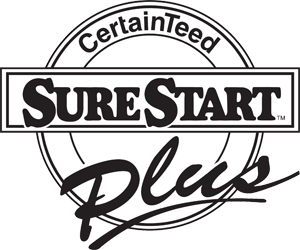Dark Shingles vs Light Shingles: Stay Informed On Your Roof
In the world of roofing, choosing the right material can be a critical decision for homeowners. One of the key choices they face is between dark shingles and light shingles, each offering its own set of advantages and considerations. In this article, we will explore the factors that should guide your decision when it comes to selecting the ideal roofing material for your home.

Understanding Dark Shingles
When it comes to roofing, dark shingles are a popular choice that offers a distinct set of characteristics. Let’s delve into what defines dark shingles and explore the advantages and drawbacks associated with them.
Defining Dark Shingles
Dark shingles, as the name suggests, are roofing materials that come in deep, rich colors. These shingles are typically darker shades of brown, gray, black, or even deep red. They are known for their ability to absorb and retain heat.
Advantages of Choosing Dark Shingles
Energy Efficiency in Colder Climates: Dark shingles excel in colder regions. They absorb sunlight and heat, which can help melt snow and ice on the roof more effectively. This can prevent the formation of ice dams and potential roof damage caused by the weight of accumulated snow.
Enhanced Curb Appeal on Certain Architectural Styles: Dark shingles often provide a striking contrast to light-colored siding or architectural elements. They can lend a sophisticated and classic look to homes with specific design aesthetics.
Drawbacks of Dark Shingles
Increased Heat Absorption in Hot Climates: While the heat-absorbing quality of dark shingles can be an advantage in cold climates, it can be a drawback in hotter regions. Dark shingles can make your home warmer in the summer, potentially increasing cooling costs.
Potential for Quicker Fading and Wear: Dark shingles may be more prone to fading over time due to their exposure to the sun’s ultraviolet (UV) rays. This can affect their appearance and longevity, leading to the need for more frequent replacements or repairs.

Exploring Light Shingles
Light shingles, are a distinct category of roofing materials that bring their own unique qualities to the table. In this section, we will define and describe light shingles and delve into their advantages and disadvantages.
Defining Light Shingles
Light shingles are roofing materials that come in softer and lighter colors. These shingles typically include shades of beige, light gray, or even white. They are known for their reflective properties and their ability to resist heat absorption.
Benefits of Opting for Light Shingles
Reflective Properties for Energy Savings in Warm Climates: Light shingles excel in warmer regions. Their reflective surfaces bounce back a significant amount of sunlight, reducing heat absorption. This can help keep your home cooler during hot summers, potentially leading to energy savings and increased comfort.
Reduced Heat Absorption, Potentially Extending the Roof’s Lifespan: Light shingles are less likely to absorb excessive heat. This quality can contribute to a longer lifespan for your roof by reducing the wear and tear caused by temperature fluctuations.
Drawbacks of Light Shingles
May Not Complement All Architectural Styles: While light shingles offer several advantages, they may not be the ideal choice for all architectural styles. Some homeowners may find that light shingles do not harmonize as well with the overall aesthetics of their homes.
Less Effective at Melting Ice and Snow in Cold Climates: In regions with heavy snowfall and cold winters, light shingles may not be as effective at melting ice and snow compared to their dark counterparts. This can lead to the formation of ice dams, which may require extra maintenance.

Factors to Consider
When it comes to choosing between dark shingles and light shingles, homeowners should weigh several key factors to make an informed decision that suits their unique needs and circumstances. Let’s explore these essential considerations:
Climate and Local Weather Patterns
One of the foremost factors to ponder is your local climate. The weather in your region plays a pivotal role in determining the ideal shingle color for your roof. In colder climates, where snow and ice are prevalent during winter months, dark shingles might be advantageous. They can help melt snow and ice more efficiently, potentially preventing ice dams and the associated roof damage. In contrast, light shingles are better suited for warmer climates, where their reflective properties can reduce heat absorption and contribute to energy savings.
Architectural Style and Home Aesthetics
Consider the architectural style and overall aesthetics of your home. The color of your shingles should harmonize with your home’s design. Dark shingles can provide a classic and bold appearance, complementing certain architectural styles. On the other hand, light shingles offer a softer and more contemporary look. It’s important to choose a shingle color that enhances your home’s curb appeal and fits seamlessly with its style.
Energy Efficiency Goals
If you have specific energy efficiency goals for your home, such as reducing heating or cooling costs, your choice of shingle color can impact your success. Dark shingles can aid in heating your home more effectively in cold climates but may increase cooling costs in hot regions. Light shingles, with their reflective properties, are better suited for reducing cooling costs in warm climates. It’s essential to align your energy efficiency goals with your shingle choice.
Long-Term Maintenance and Cost Considerations
Roofing is a long-term investment, and the choice of shingle color can influence maintenance and replacement costs over time. Dark shingles may require more frequent maintenance and replacement due to potential fading and wear. Light shingles, by contrast, may have a longer lifespan. Consider the long-term cost implications and maintenance requirements associated with your chosen shingle color.

Making an Informed Decision
Conduct a Climate Analysis for Your Region
Start by assessing the climate in your local area. The weather patterns and temperature extremes in your region should play a pivotal role in your decision-making process. If you live in a colder climate with heavy snowfall, dark shingles may be more advantageous for their heat-absorbing properties, which can help prevent ice dams. Conversely, if you reside in a warmer area, light shingles with their reflective qualities may be a better fit, potentially reducing cooling costs.
Consult with a Roofing Professional for Expert Advice
Don’t hesitate to seek the expertise of a professional roofing contractor. They have hands-on experience and can provide valuable insights tailored to your specific situation. A roofing professional can assess your home, consider your climate, and discuss your aesthetic preferences to recommend the most suitable shingle color for your needs. Their advice can be invaluable in making the right choice.
Consider the Long-Term Cost Implications
Roofing is a long-term investment, and your choice of shingle color can impact maintenance and replacement costs over the years. While dark shingles may excel in certain climates, they might require more frequent maintenance and replacements due to potential fading. On the other hand, light shingles may have a longer lifespan. Consider not only the upfront cost but also the long-term expenses associated with your chosen shingle color.
Factor in Personal Aesthetic Preferences
Your home is an expression of your personal style, and the color of your shingles should complement your aesthetic preferences. Consider how each shingle color option will blend with your home’s architecture and exterior design. Visualize the final look and feel of your home with both dark and light shingles to ensure your choice aligns with your vision.
View More Articles
Please Share!











